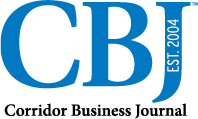HEDCO adds four to board of directors
CBJ News Staff

Dave Parmley. CREDIT FIRST INTERSTATE BANK
Dave Parmley retired today, May 2, 2024, ending a 44-year banking career, including the last seven years as Cedar Rapids market president for Great Western Bank and, most recently, First Interstate Bank.
Mr. Parmley agreed to respond to a list of questions prepared by the Corridor Business Journal regarding his career, ranging from his banking experience to the most significant changes he’s seen in the financial…

Get immediate, unlimited access to all subscriber content and much more.
Learn more in our subscriber FAQ.
Do you want to read and share this article without a paywall?
